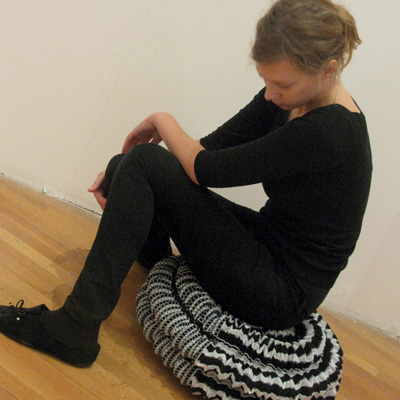Helen Hamlyn Centre joins charity on autism project briefs

With diagnosis of autism increasing and sufferers more likely to live with the condition into old age, the Royal College of Art’s Helen Hamlyn Centre is working with autism charity Kingwood Trust to develop housing solutions for people with the condition.
A set of guidelines has already been delivered by HHC, which aims to establish tailored designs for sufferers of what is considered to be a very variable condition, with many symptoms.
The project is continuing with the aim of designing a multisensory environment by making interventions into a new Kingwood Trust building in Reading, which will see new housing developed for adults with autism. Funding is in place and HHC is working with architect Maber Associates and consultancy Being.
Ahead of this, further research will be delivered at next year’s London Design Festival, including the results of ’co-creation’ between adults with autism and designers.
Two RCA research associates are leading the project, drawing on findings from the guidelines and their own product designs to produce mock-ups and prototypes, some of which will go into the Kingwood Trust house in Reading.
Andrew Brand is an industrial engineer with a family member who has autism. He has developed Squease, a commercially available product designed for people with autistic spectrum disorders – which interrupt people’s ability to process sensory information.
A hug-like ’deep pressure’ applied to the upper body can calm or improve the concentration of someone with ASDs. Brand has developed a deep-pressure vest, which, when worn as an undergarment and controlled by the wearer, can reduce the anxiety felt at times of stress.
In the latest Kingwood Trust project, Brand is using psychological profiling questionnaires and adapting them to design for the needs of adults with autism, creating briefs for spaces and objects.
Together with the guidelines published in September, which detail information on sensation and sensory input, Brand is looking at designing for both indoor and garden spaces.
These, he says, could be ’discreet deployable features’, like screens for people with autism who need privacy or ’sensory props’ to encourage communication.
Brand is working with textile specialist Katie Gaudion, who has experience of designing for sensory environments.
Gaudion has already worked on non-verbal methods of communication including a slinky-based product, the Springy Thingy pouf, which helps people with autism apply ’deep pressure’ and can act both as a seat and a tactile form of engagement. She joined slinkys together in individual pockets of a knitted skin.
Another piece, based on the Jacob’s Ladder toy, has been developed by Gaudion to encourage sensory engagement in people with autism ’who don’t have the motor skills’ to operate the toy, she says. A wall-mounted, handle-operated pulley simplifies the process.
Gaudion is now ’getting to know the residents’ of the Kingwood Trust to ’understand their needs’. Lighting, tactile surfaces and sound all need to be considered.
HHC deputy director Rama Gheerawo hopes that the project as a whole will ’build visibility’ in the area and show that design can help ’people of different abilities have a place in mainstream societies’ cities and built environments’.
Key findings
- The design of residential buildings can profoundly impact on the health of adults with autism
- To enhance the confidence and independence of people with autism and complex needs, a holistic approach must be taken that aligns the building design and level of personal support with individual preferences and aspirations
- The abilities and sensitivities of individuals on the autistic spectrum vary greatly so reactions to the environment can differ
Source: Living In The Community: Housing Design for Adults with Autism, Andrew Brand 2010
-
Post a comment




